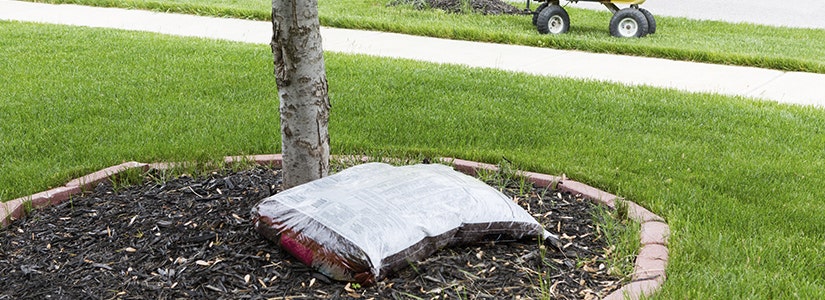

- Home
- Solution Center
- Learn
- Learn: Tree & Shrub
- Growing Shrubs: Getting Started
Growing Shrubs: Getting Started
Shrubs play key roles in the home landscape. Planted as a hedge, they can define property lines and enhance privacy. Used throughout a landscape, they can tie other elements together beautifully. Shrubs can also add color and habitat for wildlife. In mixed planting beds, count on shrubs to introduce texture or color to plantings and to create a backdrop for perennials. Follow these tips for success with shrubs.
First Steps
- Site: Match shrubs to the ideal site by taking an inventory of your proposed planting area.
- Determine light levels, soil type and drainage.
- To double-check soil drainage, dig a hole, fill it with water, let it drain and refill it again.
- If it takes 6-8 hours to drain, choose moisture-loving shrubs.
- Anything less and you want a shrub that thrives in well-drained or average soil.
- If the water drains in a very short time – under an hour – you probably have sandy soil.
Selection Check regional gardening books for shrub suggestions that thrive in your region. Your local Cooperative Extension System office will also have resources you can use to cull the sea of shrubs into ones that fit your needs and desires.
Hardiness Select shrubs rated to survive in your USDA hardiness zone. Don't know your zone? Check with Your local Cooperative Extension System office or garden center.
Spacing Read plant labels and position plants no closer than recommended (according to mature plant width) to one another, neighboring plants or structures. Overcrowded shrubs won’t thrive and will require frequent pruning.
Planting Once you’ve selected a site and chosen a shrub:
- Dig a hole three times wider than the root ball and only deep enough so the shrub will be positioned at the same depth in soil as it is in a nursery container.
- Don’t amend the soil you remove from the planting hole. Just replace it around the shrub.
- Lastly, form soil into a 2-3-inch-tall barrier about 6 inches away from the shrub stem(s) to create a water catch basin to direct water to plant roots.
Ongoing Care
Water Newly-planted shrubs need regular water for the first 1-2 years of growth. Check soil near the root ball for moisture; apply water when it’s almost dry.
Mulch Place a 2-3-inch layer of mulch on soil beneath shrubs. At planting time, remove all weeds or grass in that area before applying mulch. Keep mulch away from the shrub’s stems to allow air flow. Mulch helps prevent damage to shrubs from lawn mowers and string trimmers. Expand the mulch area as your shrub grows. Aim to mulch any area beneath the shrub’s leaves. Learn more about mulch.
Fertilizer Test your soil regularly to determine if it lacks nutrients. In general, for the first three years while shrubs are establishing, you can fertilize plants early in your growing season, when new growth is appearing. If shrubs are in a lawn that's fertilized regularly, they likely won't need additional fertilizer.
Pruning Typically, prune to remove dead, broken, or diseased branches, or to control or direct growth. For spring-flowering shrubs, prune immediately after flowering. Prune summer-blooming shrubs in early spring, before or right as new growth begins. In coldest regions, wait to prune summer bloomers until after your last frost date. Use the right tools to prune.
Pests and diseases Inspect shrubs on a regular basis for signs of pests and diseases. Research to see if a particular pest or disease usually attacks the shrubs you have. Sometimes there are regional problems. Check with your local nursery or local Cooperative Extension System office to learn what to watch for in your area. Learn what some common summer and fall pests look like.














